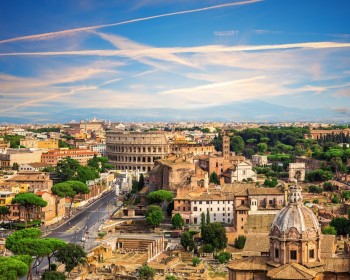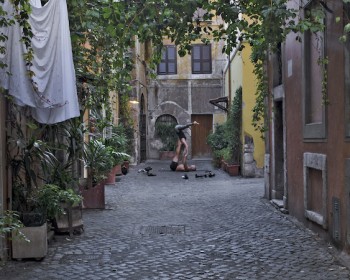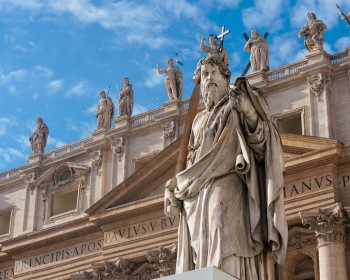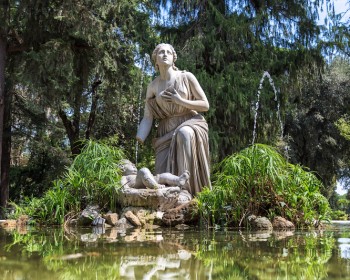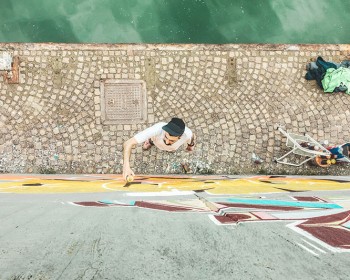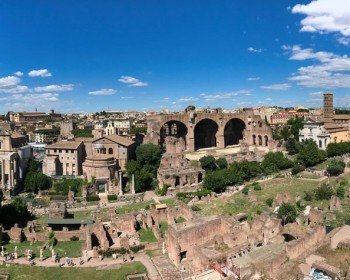Rome is one of the places where history has left a great number of works and monuments of great historical importance.
One of the sites where you can retrace the last 2000 years of history is the Basilica of San Clemente in Rome. The Basilica is dedicated to Pope Clement I (the third pope after Saint Peter died around the year 100 AD) and is currently run by the Irish Dominican friars.
→ BOOK NOW A Colosseum and Underground Rome Private Tour
The Basilica of San Clemente al Laterano
The Basilica of San Clemente is located in the valley between the hills of Esquilino and Celio. It is based on 3 levels of depth unearthed since 1857 thanks to Father Joseph Mullooly O.P. (Prior of Saint Clement):
- the present medieval basilica, built in the twelfth century by Cardinal Anastasio
- the ancient basilica dating back to the first century AD.
- a set of Roman buildings of the post-neronian era
The modern Basilica is divided into 3 naves separated by Roman columns. In the central apse there is the wonderful mosaic with the center of Christ crucified between the Virgin and Saint John the Evangelist.
Visiting the Basilica you can go back in time.
Around 64 A.D. a Roman house was destroyed by the famous fire of Nero, in that point Nero put on the domus aurea, a rich residence, with a huge park with a lake. Nero fell and dried up the lake and the Colosseum was built.
In the lower basilica, it is believed that the relics of Saint Cyril who brought the relics of Saint Clement to Rome from Crimea are preserved.
The frescoes in the lower basilica are of great historical and artistic interest and depict some miracles attributed to Saint Clement. In the central nave of the lower Basilica there is one of the most famous frescoes of the Basilica, the one that tells the story of Sisinnio and San Clemente. It is said that the patrician Sisinnio had ordered his servants (Gosmario, Albertello and Carboncello) to capture San Clemente. But as punishment, the servants carried instead a marble column.
Below the painting there are transcriptions of phrases expressed between Latin and Vulgar (testimony of the first Italian vernacular):
- Sisinium: «Fili de le pute, traite, Gosmari, Albertel, traite. Falite dereto co lo palo, Carvoncelle!»
- Saint Clement: «Duritiam cordis Vestris, saxa traere meruistis».
Translation:
- Sisinnio: «Motherfuckers, pull! Gosmario, Albertello, pull! Carvoncello, push from behind with the pole»
- Saint Clement: «Because of the hardness of your heart, you deserved to drag stones».
Going down to an even lower level we find a second building, consisting of an insula: a house divided into several apartments located near a central courtyard. Inside the courtyard was built, between the second and third centuries, a Mithraeum, a temple where a Persian deity called Mithras was worshipped.
At the bottom, placed in a niche, is the altar depicting the Tauroctonia, or the representation of the killing of the bull by Mithras.
At the end of the 4th century, the Mithraeum was destroyed, as its religion was declared illegal.
Some curiosities about the Basilica of San Clemente
The Basilica of San Clemente is full of charm, history and curiosity. Here are some that you may not know:
- The remains of the Basilica extend up to 20 meters below the current road level. Visiting it means making a vertical journey to discover its long history;
- The Basilica of San Clemente al Laterano is one of the most interesting and ancient basilicas of Rome with over 2000 years of history;
- The high altar of the basilica is built on the confessio or tomb of martyr in which there is an urn with the alleged relics of San Clemente and S. Ignazio;
- In the chapel of Santa Caterina you can admire the frescoes with life stories of the saint by Masolino da Panicale;
- The church is home to the title of Cardinal of San Clemente, established in the 5th century: the title currently (2021) is vacant.



